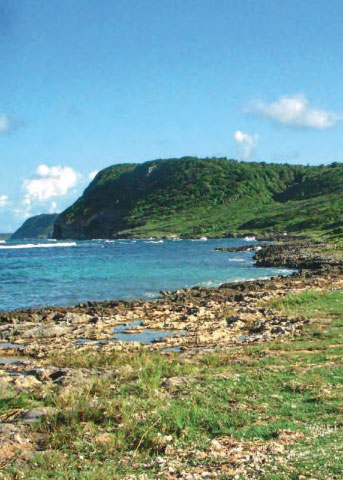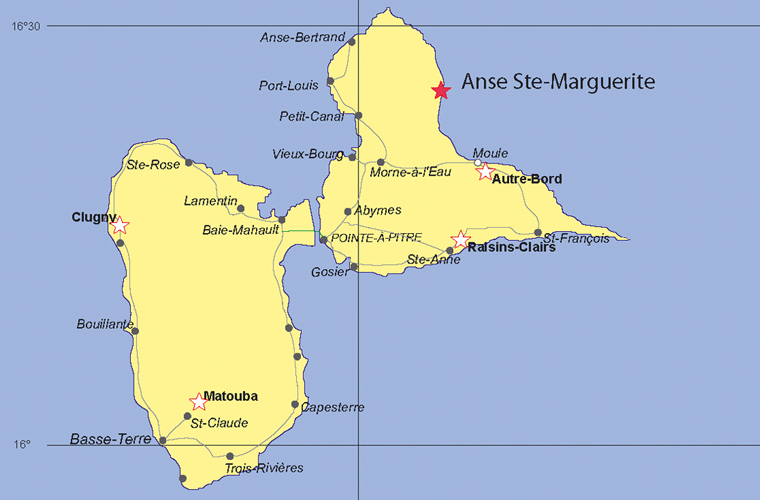The discovery of human bones on the beach at L’Anse Sainte-Marguerite, threatened with gradual destruction by coastal erosion, led to archaeological operations being conducted there from 1997 to 2002.
A vast cemetery from colonial times was discovered by a team of archaeo-anthropologists. This funerary complex was found covering a Native American site. However, the discovery of the remains of humans laid on their backs in wooden coffins provided an obvious link to the colonial period. The extent and the exceptional state of preservation of this funerary complex, which contains several hundred burials, made it possible to implement a program that focused on the funerary practices and treatments carried out on the deceased, but also on the sanitary conditions of the population.
 The discovery of this cemetery on a beach, far from any places of formal worship, in a region dominated by historic sugar cane plantations suggested that this was a slave burial ground. In the late eighteenth century, almost 90 percent of the population to the North of Grande-Terre was made up of slaves. The cemetery was used by enslaved people from several nearby plantations in the second half of the eighteenth century and in the nineteenth century.
The discovery of this cemetery on a beach, far from any places of formal worship, in a region dominated by historic sugar cane plantations suggested that this was a slave burial ground. In the late eighteenth century, almost 90 percent of the population to the North of Grande-Terre was made up of slaves. The cemetery was used by enslaved people from several nearby plantations in the second half of the eighteenth century and in the nineteenth century.
Two sectors were highlighted during the archaeological digs. To the south, graves were laid out in random directions, with coffins used in slightly less than 50 percent of cases. This orientation of burials is attributed to the fact that before the first abolition (1794), not all slaves were baptized, despite this being recommended by the Code Noir (or Black Code) for the French colonies. However, to the north, Christian rituals were particularly well respected, as demonstrated by burials that set the heads of the deceased westward, as well as the discovery of certain religious objects, such as prayer beads.
The African origins of the subjects are demonstrated by certain morphological bone characteristics, as well as some dental injuries found in certain individuals. Dental mutilation, such as front teeth filed into points, corresponds to certain rites of passage in the populations of western Africa. These cultural rituals were strictly prohibited in the French colonies. Their presence suggests that these individuals were born in Africa and subsequently deported, either during or after adolescence.
Various biological studies revealed the negative effects of hard labor and a high presence of tuberculosis caused by poor hygiene and particularly harsh living conditions. Though yet to be fully explored, this cemetery is a site of major importance for the study of slavery in the Caribbean. It is currently the best-documented burial site in all of the Antilles.
Slave Burial Ground of Anse Sainte-Marguerite is part of the Slave Route—Traces of Memory network organized by the Conseil Général of Guadeloupe.

